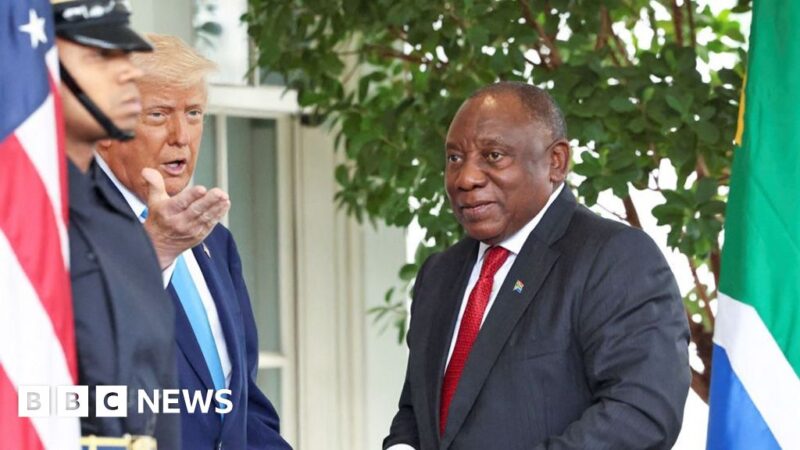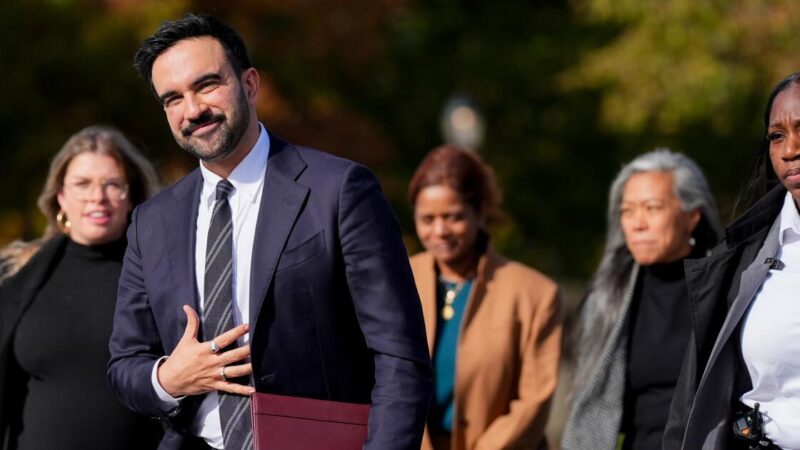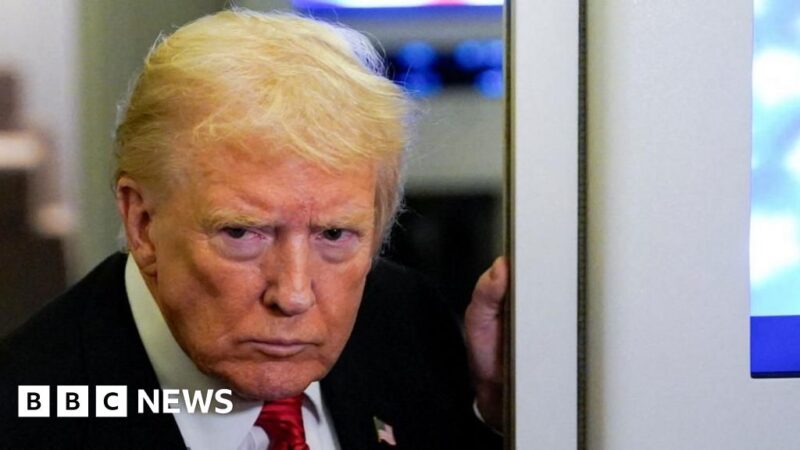Contributor: Trump’s weaponizing of ‘emergency’ label comes to a head
In Washington today, the word “emergency” is a magic key; it unlocks powers Congress never granted, suspends the discipline of regular order and decorates bloated bills with provisions too dubious to pass on their own. What was once meant to be a narrow exception for genuine crises has become a routine pretext for government overreach — a means of inflating executive power and corroding the nation’s fiscal credibility.
Start with the most brazen claim, and one soon to be scrutinized by the Supreme Court: that a president may impose sweeping tariffs under the International Emergency Economic Powers Act ( IEEPA) merely by declaring that a half-century of trade deficits constitutes an emergency.
Tariffs are taxes paid by Americans, and the Constitution assigns the power to tax to Congress. Yet the Trump administration argues that the president’s tariff power is beyond reproach because only he is the designator of emergencies.
The Washington Post’s George Will summarized the stakes crisply: a statute being read as a roving license to restructure the economy and give the president “unreviewable power to impose taxes … of whatever amount, and for as long as he chooses.” Amicus briefs from across the political spectrum press the simple point that the IEEPA doesn’t authorize this, and an emergency cannot be a long-running condition that has coincided with rising American prosperity.
Congress, for its part, has effectively built a parallel budget out of the emergency label. Whenever caps on discretionary spending or pay-as-you-go (PAYGO) requirements threaten to bite, the label becomes something more. Use it and the spending simply doesn’t count against agreed-upon limits or require offsets.
The best recent accounting by the Cato Institute’s Dominik Lett puts the emergency-spending price tag at about $12.5 trillion (inflation-adjusted) since 1991. Count the roughly $2.5 trillion more in interest on the related debt and the number is around $15 trillion altogether.
Over the last decade, roughly one in every 10 dollars of budget authority has worn an emergency tag. That’s not a safety valve; it’s a standing work-around that has already swallowed even the modest savings promised by the Fiscal Responsibility Act two years ago.
What makes this practice so easy? It’s largely self-policed.
On paper, the Office of Management and Budget has a five-part test for emergency spending: It should be necessary, sudden, urgent, unforeseen and not permanent. Congress rarely forces itself to demonstrate, item by item, that all five prongs are met. There’s no neutral referee. Once “designated as an emergency” appears in the bill and the president concurs, the amounts are exempt from caps and PAYGO scorecards.
And because this budget label is separate from more specific “national emergency” declarations under statutes like the Stafford Act or the National Emergencies Act, it quietly turns into a vehicle for funding routine projects. It’s such a procedural magic word that fiscal guardrails all but disappear.
Finally, even when a real crisis exists, so too does opportunism. Emergency bills move fast, face weak scrutiny and become irresistible means for unrelated projects or those that Congress would never approve otherwise. This dynamic marred the 2012–13 Hurricane Sandy package and has recurred in other disaster bills, not because relief is illegitimate but because speed plus political cover invites provisions that would die in regular order.
The pandemic supercharged the pattern. Much of the $1.9-trillion American Rescue Plan had little to do with COVID-19. Only a small share went to direct health measures. Hundreds of billions funded unrelated legislative wishes, such as $350 billion for state and local governments whose revenues had already recovered, and large education and social welfare expansions designed to last well beyond the pandemic.
It was the emergency label that exempted this spending from budget rules, allowing legislators to pass a wish list of permanent programs under the guise of temporary relief. It’s having long-lasting effects, with the shutdown being in part about making some of the “emergency” measures — like the expanded Obamacare premium tax credits — permanent.
The stakes of the abuse of emergency labeling are no longer abstract. Interest costs on debt that results from the extra spending are crowding out core functions of government. Americans are hammered with “emergency” tariff costs. The next true crisis will arrive with less room to maneuver if we keep burning credibility on manufactured ones.
A republic that treats emergencies as a governing philosophy is a republic that lives without its safeguards. We must put the word back in its place: as one describing something rare, reviewable, temporary and paid for.
Veronique de Rugy is a senior research fellow at the Mercatus Center at George Mason University. This article was produced in collaboration with Creators Syndicate.
Insights
L.A. Times Insights delivers AI-generated analysis on Voices content to offer all points of view. Insights does not appear on any news articles.
Viewpoint
Perspectives
The following AI-generated content is powered by Perplexity. The Los Angeles Times editorial staff does not create or edit the content.
Ideas expressed in the piece
The author argues that the word “emergency” has been transformed from a narrow exception for genuine crises into a routine tool for executive overreach, allowing presidents to bypass Congress and exercise powers the legislative branch never intended to grant. The Trump administration’s use of the International Emergency Economic Powers Act to impose sweeping tariffs based on decades-long trade deficits represents the most brazen example of this abuse, particularly troubling because the Constitution explicitly assigns the power to tax to Congress[1][2]. The author emphasizes that only presidential designation of an emergency is required for these tariff powers to take effect, creating what amounts to unreviewable presidential authority to restructure the economy through taxes of unlimited amount and duration. Beyond trade policy, Congress itself has weaponized the emergency label for budget purposes, circumventing fiscal guardrails through approximately $12.5 trillion in emergency spending since 1991, with an additional $2.5 trillion in interest costs. The author contends that the Office of Management and Budget’s five-part test for emergency spending—requiring measures to be necessary, sudden, urgent, unforeseen, and temporary—is rarely enforced, allowing routine projects to be funded under the emergency designation. Furthermore, the author notes that emergency bills move rapidly with minimal scrutiny and become vehicles for unrelated legislation, as exemplified by the American Rescue Plan, which included hundreds of billions in spending disconnected from pandemic relief. The author concludes that the crisis of emergency-label abuse has real consequences: debt service costs are crowding out core government functions, and Americans bear direct costs through emergency tariffs, while future legitimate crises will find less fiscal flexibility available.
Different views on the topic
The Trump administration contends that IEEPA confers broad executive powers to address international emergencies, with the president serving as the primary actor in matters of foreign affairs[1]. The administration’s legal representative argued that the phrase “regulate importation” in IEEPA plainly embraces tariffs, which represent among the most traditional and direct methods of regulating imports, and that Congress granted the president authority under the statute to impose such measures in response to international threats[1][3]. The administration characterizes both trade deficits with numerous countries and fentanyl trafficking as “unusual and extraordinary threats” meeting IEEPA’s statutory threshold for emergency action[2][3]. The administration points to historical precedent, noting that President Nixon relied on the Trading with the Enemy Act of 1917 to impose a 10 percent import surcharge in 1971 to address an economic crisis[4]. Additionally, during Supreme Court oral arguments, Justice Samuel Alito expressed skepticism of categorical restrictions on emergency powers, noting that statutes conferring genuine emergency authority are often drafted with broad language[3]. Some justices also suggested the existence of a potential constitutional paradox: if IEEPA permits the president to shut down all trade with another country, it would be anomalous to prohibit the more limited step of imposing tariffs, raising questions about the appropriate scope of such emergency powers[3].





